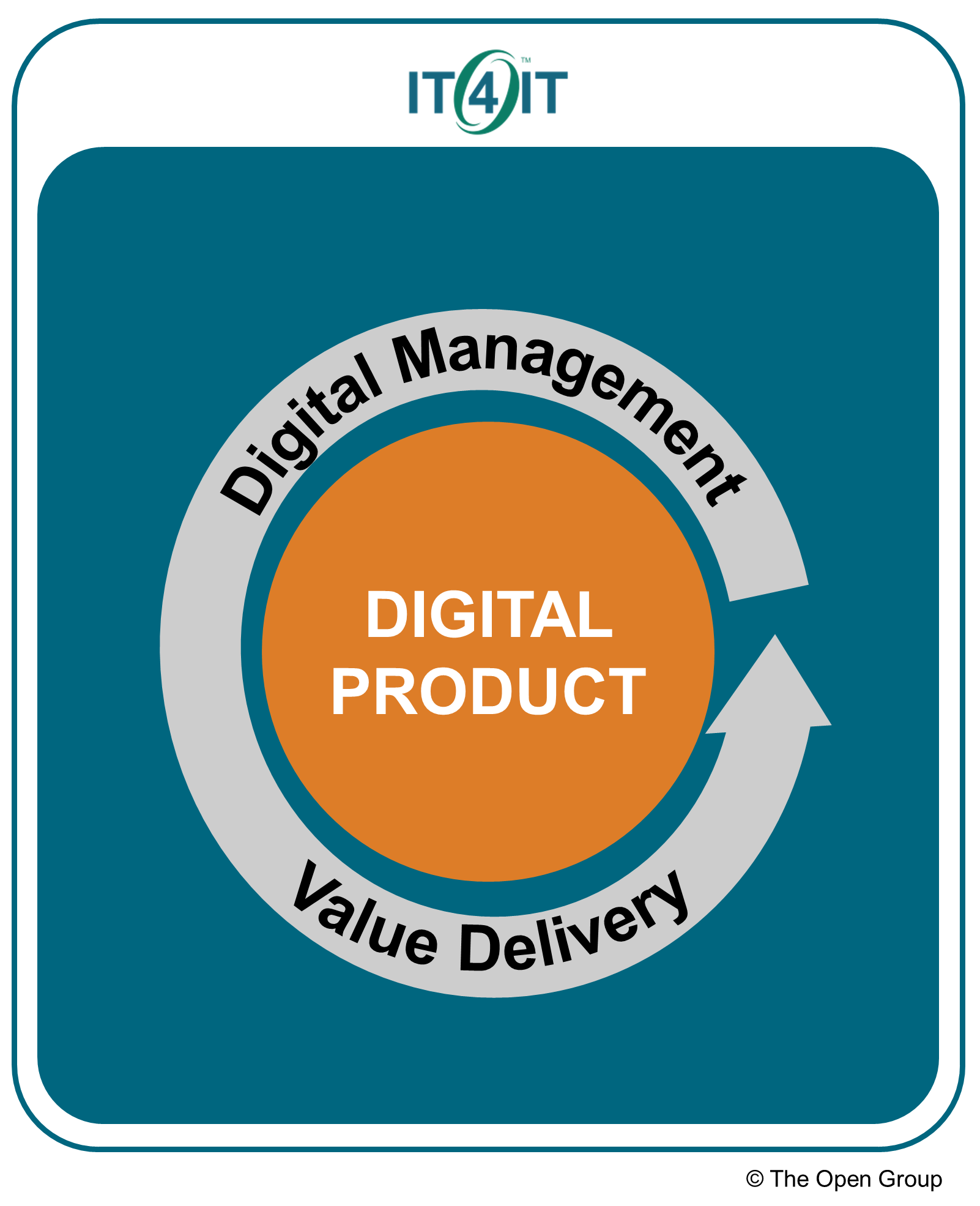Foundational Concepts
At the most basic level, the IT4IT Standard defines the “Digital Management” of “Digital Products” in order to create an efficient value delivery. This is illustrated in The IT4IT Value Delivery Framing.

A basic understanding of a few foundational IT4IT concepts is necessary for any detailed understanding of the material that follows: the standard describes how data objects, functional components, and value streams interact to deliver business value. Each is discussed briefly here. Formal definitions of these and other terms can be found in IT4IT Concepts and Metamodel.
Data objects: The most critical element of the IT4IT Standard is the identification of which information must exist and be effectively integrated for the effective end-to-end management of the Digital Product lifecycle.
The information described by each data object may be stored in a database table but the storage method is not specified by the IT4IT Standard. Likewise the format of an instance of a data object can be any relevant format (e.g., model file, source file, script, executable file, a development deliverable, a word processing document, a mail message) that can be indexed by its associated functional component.
In many organizations, much of this information is held in informal, poorly managed, or poorly integrated systems including manual filing systems or as static documents. Part of the IT4IT Standard is about ensuring what data should be identified and which functional component should control the data object through its lifecycle.
Some key data objects make up the Digital Product Backbone: the full description of a Digital Product over its lifecycle.
Other key data objects make up the Service Offer Backbone: the data about the consumption of service delivered by a Digital Product.
Functional components: These define the minimum set of operational functionality essential for effective end-to-end technology management (e.g., Strategy, Product Backlog, Defect, Identity, Incident, and so on). Each is modeled as an Application Function whose job is to control one or more key Data Objects.
The definition of each functional component includes specific functional criteria, which are the minimum operational capabilities, data integrations, and data flows required for the coherence of the full IT4IT model.
Value streams: The architecture describes seven prescriptive value streams (see The IT4IT Functionality Groups and IT4IT Value Streams). These business views of Digital Product lifecycle management are broken down into a series of value stream stages that make use of functional components and data objects to deliver a defined outcome. For each value stream, a set of practical examples is provided in the form of business scenarios.
How do these concepts work together? To achieve the high-automation, large-scale vision of the IT4IT model, the functional components would be software components that participate in a fully integrated automated toolchain – a “Digital Product factory” – that maintains full data traceability from concept to deployed Digital Product and delivered service, and for which all value streams and associated data flows and integrations are automated based on a common IT4IT architecture.